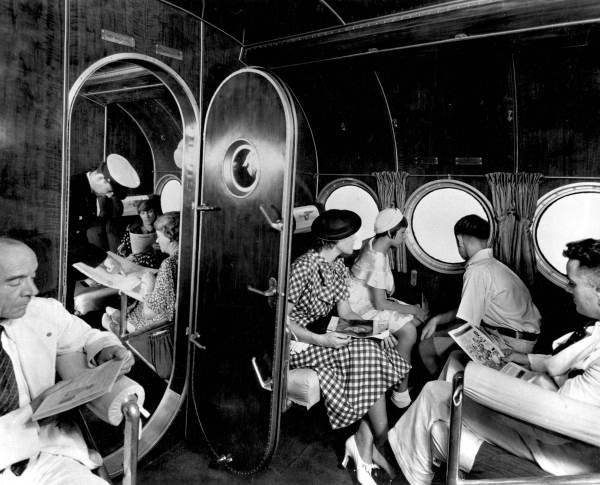CX
By
1930, Pan American Airways had 93 Weather / Navigation / Intelligence Stations
spotted throughout Latin America. Through a series of buyouts and forced
mergers it had made itself the only U.S. airline, and virtually the only
airline of any flag, operating in what has been named the “Lindbergh Circle,”
the circumference of what was once known as “The Spanish Main.”
 |
|
“The
Lindbergh Circle”
|
Every
bit of Weather and Navigational information collected by Pan Am was shared
publicly with the branches of the U.S. military. The Intel collected by Pan Am
agents on the ground was shared covertly with the State Department, who used
the data to keep tabs on incipient rebellions, possible coups, and the
protection of general American interests in Latin America.
Perhaps
Pan American’s hand-in-glove cooperation with the U.S. government explains why,
amazingly, that the struggling barely three year old airline, which had only
$175,000.00 in liquid assets and at least $1.5 million in liabilities in 1930,
was able to order up a fleet of ten new airplanes that year. And why, perhaps,
it posted a profit the next year.
 |
|
An
S-42 lifting off from Dinner Key in the 1930s. Every S-42 had a unique name,
but they were changed as various aircraft came on or went off line or changed
routes. For example, the Hong Kong
Clipper II had been known variously as the Bermuda Clipper and the Alaska
Clipper
|
The
S-40 “Flying Forest” was obsolescent as soon as it flew. At a stopover in
Cienfuegos, Cuba on its inaugural flight, Juan Trippe, Charles Lindbergh, and
Igor Sikorsky repaired to the plane’s passenger lounge and began sketching out
the design for the S-40’s successor.
The
S-42 was designed for the transatlantic route, a task it would never undertake.
Unlike earlier Sikorsky designs, the empennage was not attached to the aircraft
structure by booms. Rather, the tail assembly was the aft portion of the
fuselage. And unlike particularly the S-40 with its plethora of wires and
bracings, the S-42 had few external struts. It had a very high wing loading (a
statistic measuring the wing’s ability to lift weight and withstand flight
stresses) of almost 30 pounds per square foot, equal to that of a racing plane,
and its load-to-tare ratio was 48:52, almost a perfect balance. The plane had
hydraulic flaps and newly-invented variable pitch propellers.
 |
|
For
several years the S-42 was Pan Am’s ultimate plane, and it was sent on survey
flights. Among them were transcontinental voyages and a noted transpacific
trip. Here, the Pan Am Clipper passes
over the uncompleted Oakland-San Francisco Bay Bridge
|
The
S-42 was built to accommodate 32 passengers for daytime flights, in four
separate compartments with eight seats each. There were no sleeping berths. She carried a crew of 5 (2 pilots, an engineer,
a radio operator, and one steward). Her LOA was 69′
0’’
and her wingspan was 118′ 2″.
She had four big Pratt & Whitney Hornet air-cooled radial engines sporting Hamilton-Standard
3-blade variable pitch propellers. Her top speed was just under
200 miles per hour, and her cruising speed was about 155 mph. Her normal
cruising range was rated at 1,200 miles.
 |
|
The
cabin of the S-42 was similar to that of the S-40, right down to the teak, but
the porthole-style windows reinforced Pan Am’s nautical theme
|
When
the first S-42 took to the air for the first time for testing, it broke
virtually all existing aircraft records. It lifted eight tons of payload to
16,000 feet. Her highest recorded
altitude was 20,407 feet with 11,000 pounds aboard. On a closed course with a
full payload she flew 1,242 miles nonstop at 157.5 miles per hour.
The
first S-42, christened Brazilian Clipper,
had proved herself beyond a doubt, but she also highlighted the shortcomings in
her design. She would have made a fine mail transatlantic plane, but as a transatlantic
passenger plane she did not quite measure up. The transatlantic route had to be
made in several hops, the longest leg of which was 1,240 miles. While the S-42 had
shown it had the range to make the flight, it had it just barely. A strong
headwind or any excess weight aboard at all would doom a flight to Europe.
 |
|
Sikorsky
Aircraft was proud of its long affiliation with Pan American and assumed it
would be building the transpacific Clipper the airline wanted, but Juan Trippe,
in a typically devious move, sought a cheaper alternative without giving
Sikorsky the right of first refusal
|
She
also had a potentially dangerous design flaw that was not discovered until
later: Fuel dumps in flight tended to send aviation gasoline streaming back
over the wing into the hot engine intakes.
The
S-42s, all ten of them, were put into service on the South America runs, where
they served admirably well. But they were still not the planes Juan Trippe was seeking.
No comments:
Post a Comment